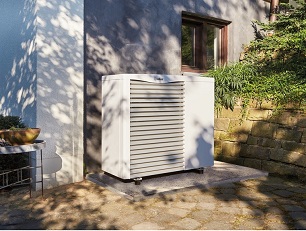As a professional tradesperson you may find yourself being asked about electric or water underfloor heating projects on an increasingly regular basis. Research shows it to be one of the fastest growing sectors in the UK heating industry – accounting for roughly 8% of the market by value in 2019.
Underfloor heating has long been desirable for property owners, thanks mostly to its sense of luxury and added value. Yet an increased focus on environmental issues has brought its energy efficiency to the fore – combined with simple and more affordable systems, rising fuel bills, and demand for more spacious living areas.
Electric and water are the key types of underfloor heating, and their cost, installation, and project suitability vary. Read the key differences below to give you full confidence when talking to customers.

How does underfloor heating work?
Underfloor heating produces gentle waves of warmth that rise through the air and are evenly distributed around a room, heating objects and people from the ground up. Underfloor systems can offer greater efficiency and design freedom than traditional central heating. Less heat is lost to the air, while the need for radiators or visible pipes is eliminated.
There are two primary ways to set them up. Sometimes referred to as ‘wet’ heating, water underfloor heating systems pump warm water from a boiler or heat pump through underfloor pipes. ‘Dry’ or electric systems meanwhile feature thin cabling or mats connected to mains electricity which generate heat when turned on.
Both types of underfloor heating can be made up of a number of zones. Your customers can control the temperature through programmable digital or Wi-Fi thermostats.
How much does underfloor heating cost?
Which is more affordable – electric or water underfloor heating? Whether you need to provide quotes or have been asked for basic guidance, you’ll want to factor in parts, installation, and running costs.
How much does underfloor heating cost to buy?
Electric underfloor heating systems are usually cheaper to buy for residential projects and smaller rooms. However, water-based systems become cheaper for spaces larger than 15sqm.
How much does underfloor heating cost to install?
Electric systems typically cost less to install due to the difference in required labour. With product instructions in hand, most electric underfloor heating systems can be installed by anyone in as little as 30 minutes. Connection to the mains however requires electrical expertise as it must conform with relevant government building regulations. In England this is Approved Document P.
Water-based systems on the other hand require plumbing experience and can take between one to three days to install, depending on the size of the area.
How much does underfloor heating cost to run?
Marginally cheaper to run than electric systems, wet heating systems can be more efficient than radiators as the water doesn’t need to be as hot. A temperature of 35°C to 60°C is enough - compared to 45°C to 80°C for domestic radiators. It’s a benefit recognised by the Energy Saving Trust.
Renewable heat sources can help lower the running costs of both types of underfloor heating further. Heat pumps work well with wet systems, while solar thermal is ideal for dry systems.
How to install underfloor heating
The system you’re asked to install is likely to depend on the type of project you’re working on. Generally speaking, electric systems can be more suitable for renovation projects as they’re easier to retrofit. Water systems involve more upheaval and are therefore better suited to new builds, extensions, or if work is already being done on a floor.
This is because of the general complexity and size of a water system. You’ll need to lay pipes, connect them to the boiler, and possibly raise the floor to accommodate them. You’ll also need to test the flow and pressure of the water.
Electrical systems are more compact and have minimal impact on floor height. Inscreed solutions are available in both types of underfloor heating and negate the need to raise the floor. As discussed above, there’s less labour required with an electric system – but you’ll still need to take great care when connecting it to the mains.
City Plumbing Category Manager for Underfloor Heating, James Abbott, advises: “There are several important considerations when installing any underfloor heating system. Planning is essential – factor in every fixture that needs to be fitted to the floor to avoid damage when putting everything back together. Clear the subfloor of dirt and anything else that could harm the heating system and be mindful of the maximum temperature the surface flooring can withstand.”
Finding underfloor heating suppliers
This guide aims to help you advise customers considering electric or water underfloor heating. And no matter whether you’re collecting quotes or carrying out the installation, we have everything you need at competitive trade prices from some of the best brands on the market.
That includes full cable kits, pipes, thermostat controls, and accessories. We offer free delivery on orders over £75, as well as click and collect services at all our 350 branches across England, Scotland, and Wales.
City Plumbing is one of the UK’s leading underfloor heating suppliers. Browse our full product selection today or get in touch if you have any questions about your next underfloor heating project.
Other articles

The key types of renewable energy explained
03 Mar 2022 ・ 5 mins

How to become a renewable energy engineer
03 Mar 2022 ・ 7 mins

Smart Home Heating Controls: A Guide for Installers
03 Mar 2022 ・ 4 mins



